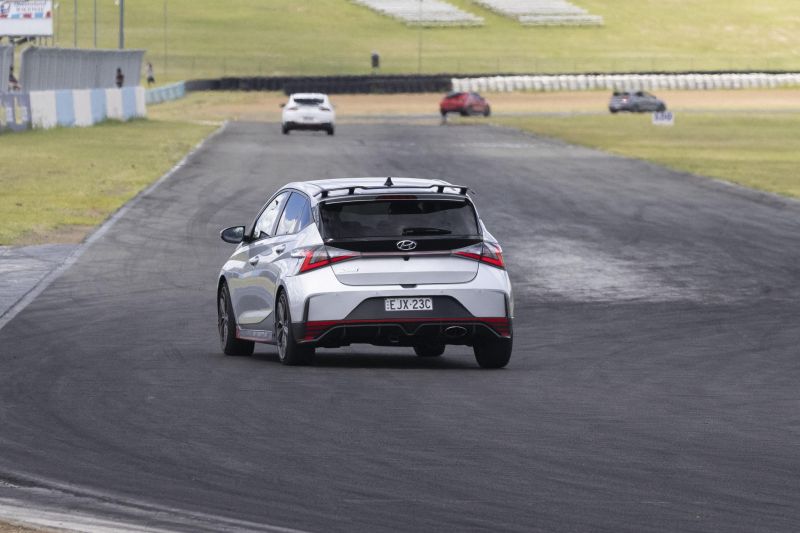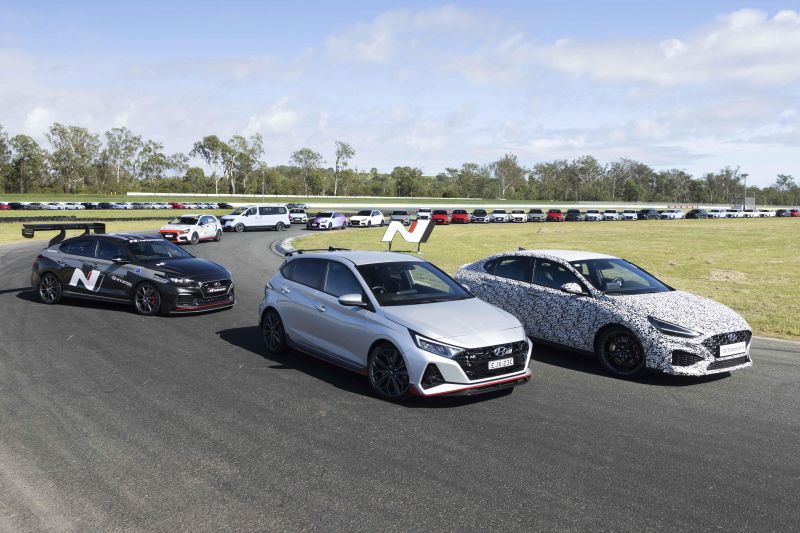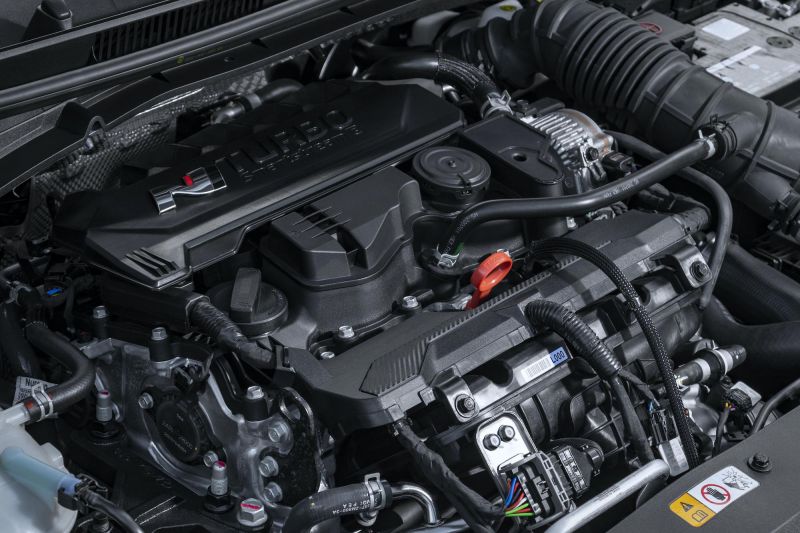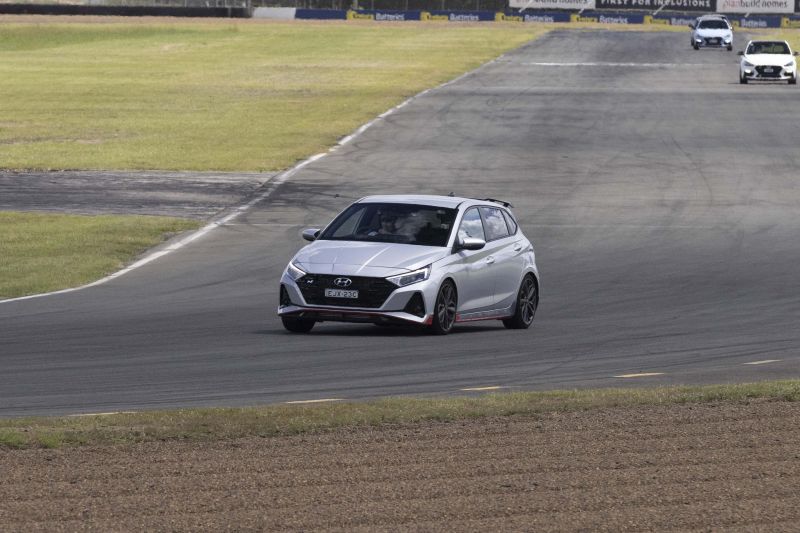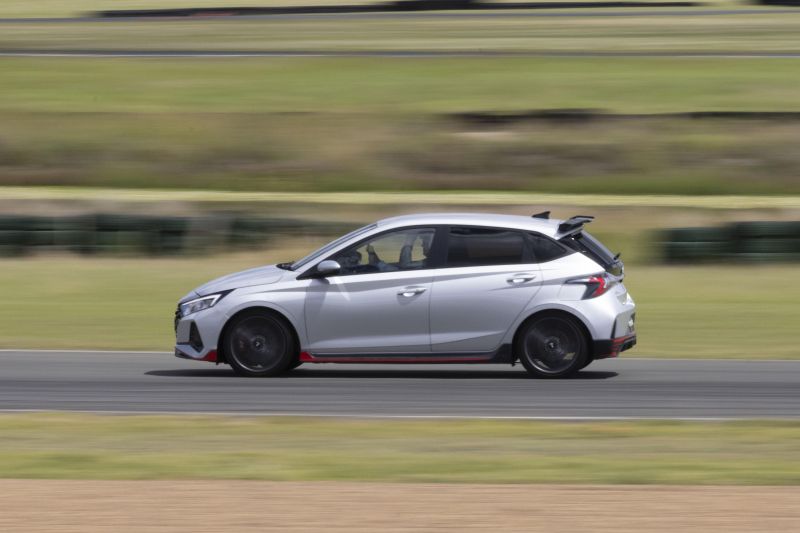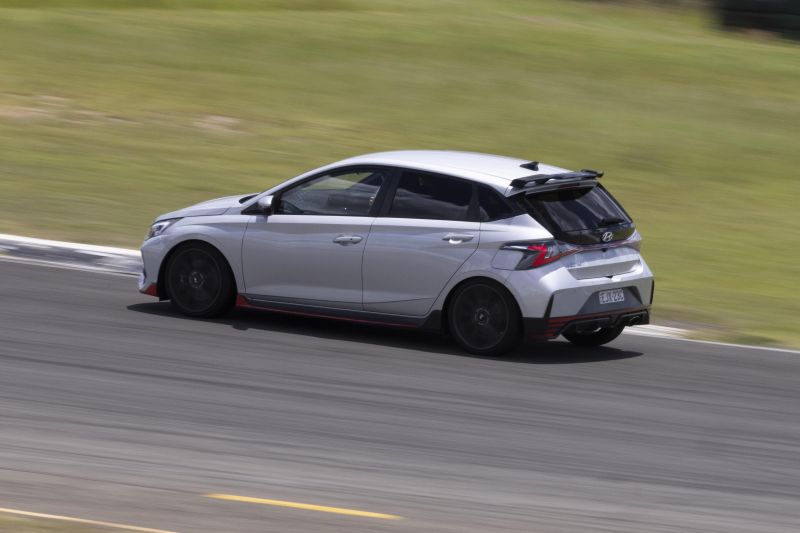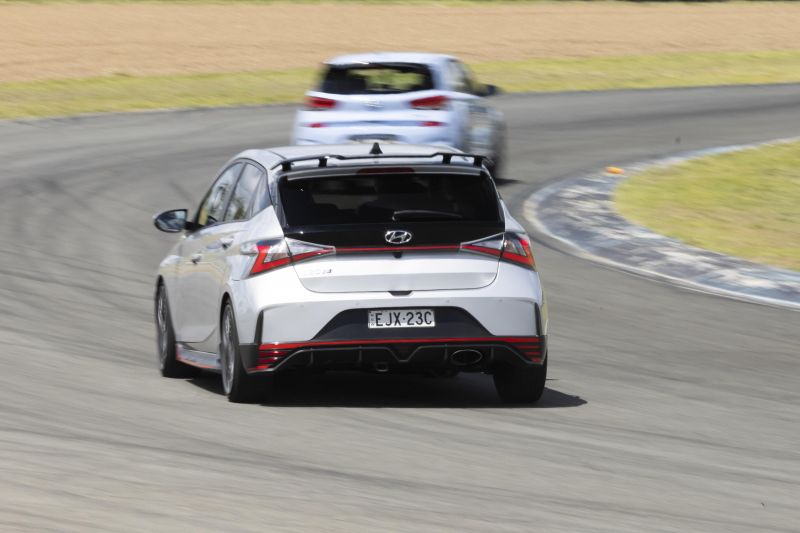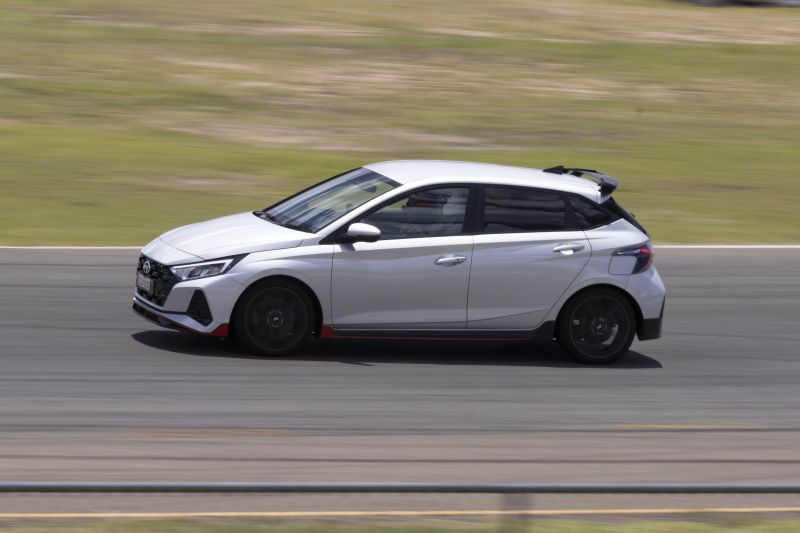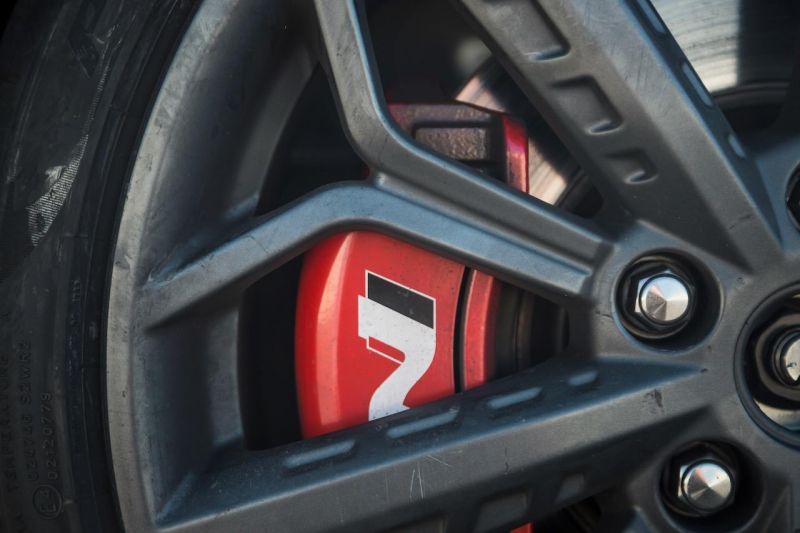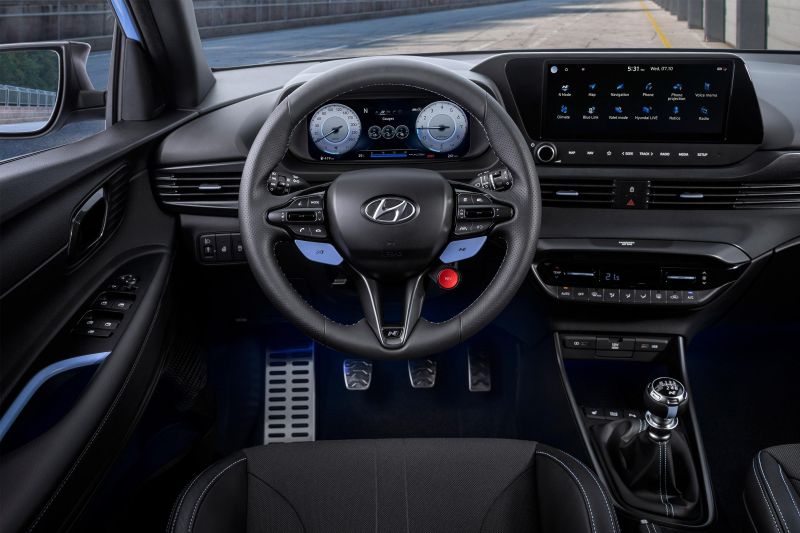I had the pleasure of being at the Hyundai N Festival earlier this year, which fortunately for us was held at Queensland Raceway where we do all our performance testing. Firstly I want to say how awesome this initiative is, with all Hyundai N owners being invited for a festival inspired track day.
Seeing over 100 Hyundai i30 Ns lined up and ready to hit the track, with all levels of cars and drivers was very impressive. You had absolute novices in stock standard cars and full track day diehards in heavily modified weapons.
Hyundai will even honour your warranty if it’s a standard car in a non-competition event, such as the N Festival.
I had the chance to sample a few cars at the Festival, from the standard Hyundai i30 N up to the full Time Attack-prepared version, along with a prototype version of the soon-to-be-released Hyundai i20 N.
Now this might not be exactly as the finished product will be, but I felt I needed to do a time on our test track to give an insight to how good this little rally-based machine is.
Overall Track Performance
This is one of the few cars I have driven on our test track that I found hard to fault.
Of course, it’s no Porsche 911 GT2 RS (the current champion of the CarExpert leaderboard), yet it’s all relative to the experience you expect to get from a vehicle.
The levels of overall grip and the ability to manipulate the car on track were exceptional.
If this is anywhere near the finished product, the Ford Fiesta ST and Volkswagen Polo GTI have a big fight on their hands.
Overall Road Performance
Unfortunately, with this car being a prototype, we didn’t get the chance to test it on the road.
But if it’s even half the car it is on the track, I can imagine it would be a heap of fun on the road.
Engine
The 1.6-litre four-cylinder turbocharged petrol engine is reactive and engaging.
With outputs rated at 150kW and 275Nm it’s a very driveable little package, and the engine feels like it’s punching above its weight.
The ability to respond in a controlled manner from low in the rev range made it very user-friendly, and it inspired confidence when on the race track.
There was a really nice overlap of the power and torque bands as well, with no holes or steps in delivery. It felt very smooth and linear, while still offering that responsive edge.
Braking
The brakes were really solid and consistent over the laps.
I liked the feeling and feedback I was getting through the pedal, but more importantly I liked how I could manipulate the rotation of the car with a light brush of the pedal.
This level of feel and modulation is missing from most modern braking systems, yet it’s so important in order to really drive the car at its absolute limit.
As with the Hyundai i30 N, the pedal stayed firm and didn’t go long at all.
Chassis
I was pretty impressed with the chassis of the Hyundai i30 N, but they have taken it to another level with the Hyundai i20 N.
It’s almost difficult to describe what I was feeling on track, and I even asked a couple of people I knew to come for a hot lap so I could show them how good the chassis and geometry were. Everyone agreed!
The ability to manipulate the car on the track, whilst also having the flexibility to recover when things got a little sideways, is second to none.
No matter what I did, the car was always able to recover grip in a controlled manner. There were no sudden snaps or pushes, just manageable slides that would rebuild grip at an appropriate rate, so that you could continue on your merry way.
Whatever work has been done on the geometry has been very well-thought out and tested. The levels of lateral grip and the confidence that offered was unreal – three-wheeling at close to 140km/h through turn one at Queensland Raceway was an impressive sight for those trackside.
I know I sound like I am gushing about this chassis, all I can say is that I hope the final production version is even close to this.
Transmission and Differentials
I found the six-speed manual transmission very sharp, easy to use and never had any trouble with shifts.
To be honest I found it a little more inspiring than in the i30 N, but that could be more due to the chassis and differential controlling slip during acceleration better.
I thought the gear ratios worked well with the engine’s power band and I never stuck in between gears on track.
The mechanical limited-slip differential was also super impressive and gave me the ability to rotate the car early in the corner then catch the slide with the throttle, all while keeping a neutral balance. This feeling is so reminiscent of how I would set up a rally car, and why I felt so at home in the i20 N.
It was more than free enough on the entry phase of the corner, and also offered ideal levels of locking for traction on exit. The fact that you can still steer while on throttle will make it very easy for all driver levels.
Suspension
The suspension worked really well on the track.
It has the ability to absorb larger hits, while still offering the support required when loaded mid-corner.
There was enough movement so traction wasn’t reduced and you could transfer the energy how you wanted, yet it didn’t feel lazy or unresponsive.
It tied nicely to the chassis and enhanced the driving experience.
Steering
Steering feel and feedback were excellent and gave me a great understanding of what I could ask from the car.
I felt a direct connection to not only the steering rack, but also how the geometry and suspension play a huge part in the feeling between the driver and the road.
It’s pretty easy to create a disconnect between the driver and the road with electrically-assisted steering racks, but fortunately Hyundai has avoided this with a great steering and chassis calibration, creating a very lively and engaging experience.
Wheels and Tyres
I feel like the Pirelli P Zero tyres had a big part to play in the lap time.
That’s not just because they were specifically designed for the i20 N, but more due to the fact this car had done more than its fair share of hot laps by the time I did the timed runs at the end of the day.
The well-worn remnants of the P Zeros added to the epic levels of lateral grip, with the tyres headed in the direction of a racing slick. The significant reduction in tread added to the tyres’ support and precision, and also helped control temperature as well.
With that said, the tyres would have still been road legal and would have only helped shave a few tenths of a second in the end.
Driver Aids (Electronics)
I ran with traction and stability control off, and never even felt a need for them.
The car is so forgiving and controllable there was absolutely no need for those systems on track.
Cockpit (Ergonomics)
The seats reminded me of the original Subaru WRX STi seats from the 1990’s, and I loved that – simple and supportive.
I had no problem heal-toeing, and I still can’t get my head around using the auto rev-matching for the downshifts, but the red button on the steering wheel looks cool.
I liked the way the shift lights worked, and having the ability to pre-select drive modes using the N buttons on the wheel is great.
Lap Time
We were fortunate to have the opportunity to drive the Hyundai i20 N on our CarExpert test track thanks to the fact the N Festival was running the exact layout we use at Queensland Raceway.
I had already done a few laps in the car during the day and was taken back by how much fun it was to drive and the levels of lateral grip.
Right at the end of the day I grabbed a timing device, zip-tied it to the front of the i20 N and headed out for two sets of two-lap runs while the track was clear.
When I saw the time after the first run, I almost couldn’t believe it – 61.04 seconds, which is quicker than the Golf R, i30 Fastback N and several others. I knew I had a bit more in me and managed to shave another tenth off the last lap, getting a final time of 60.96 seconds.
Considering this is a prototype, it’s a bit of an exception on the CarExpert leader board and I can only hope the production version shines as bright when we test it.
Atko’s 3:
- One of the best cars for learning on the track, go and have a crack
- Attack everywhere, learn where the limit is then dial it back
- If you buy a Hyundai N, don’t be afraid to go to an N Festival, you’ll have a great day





